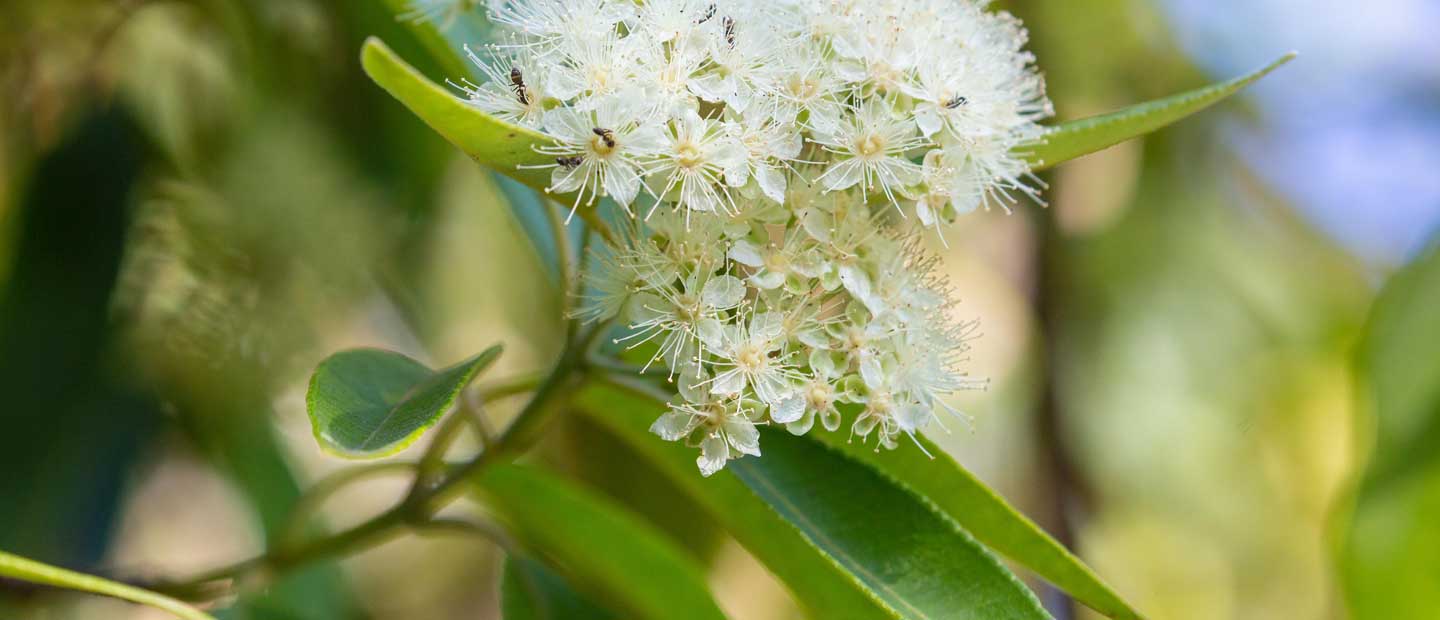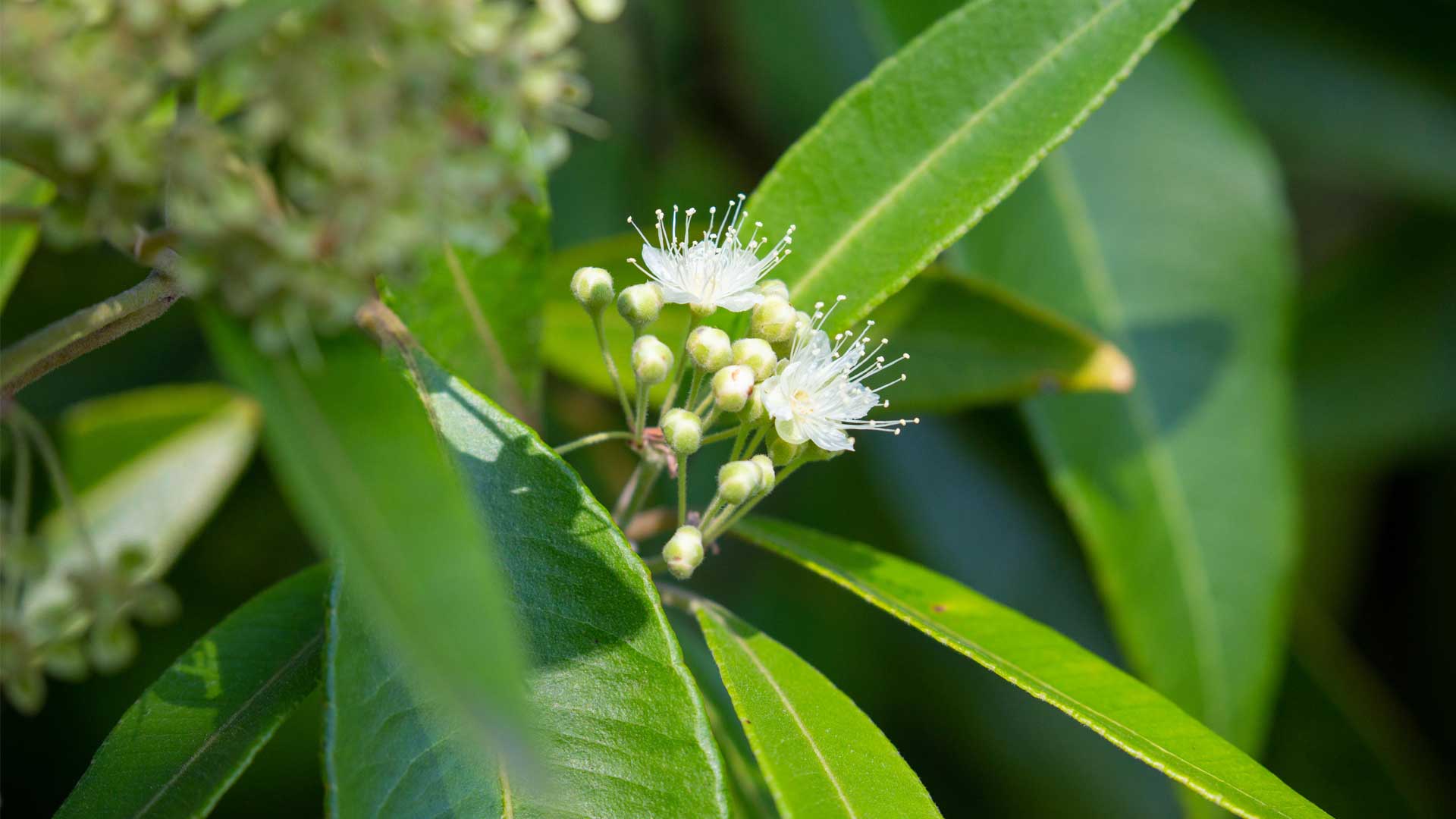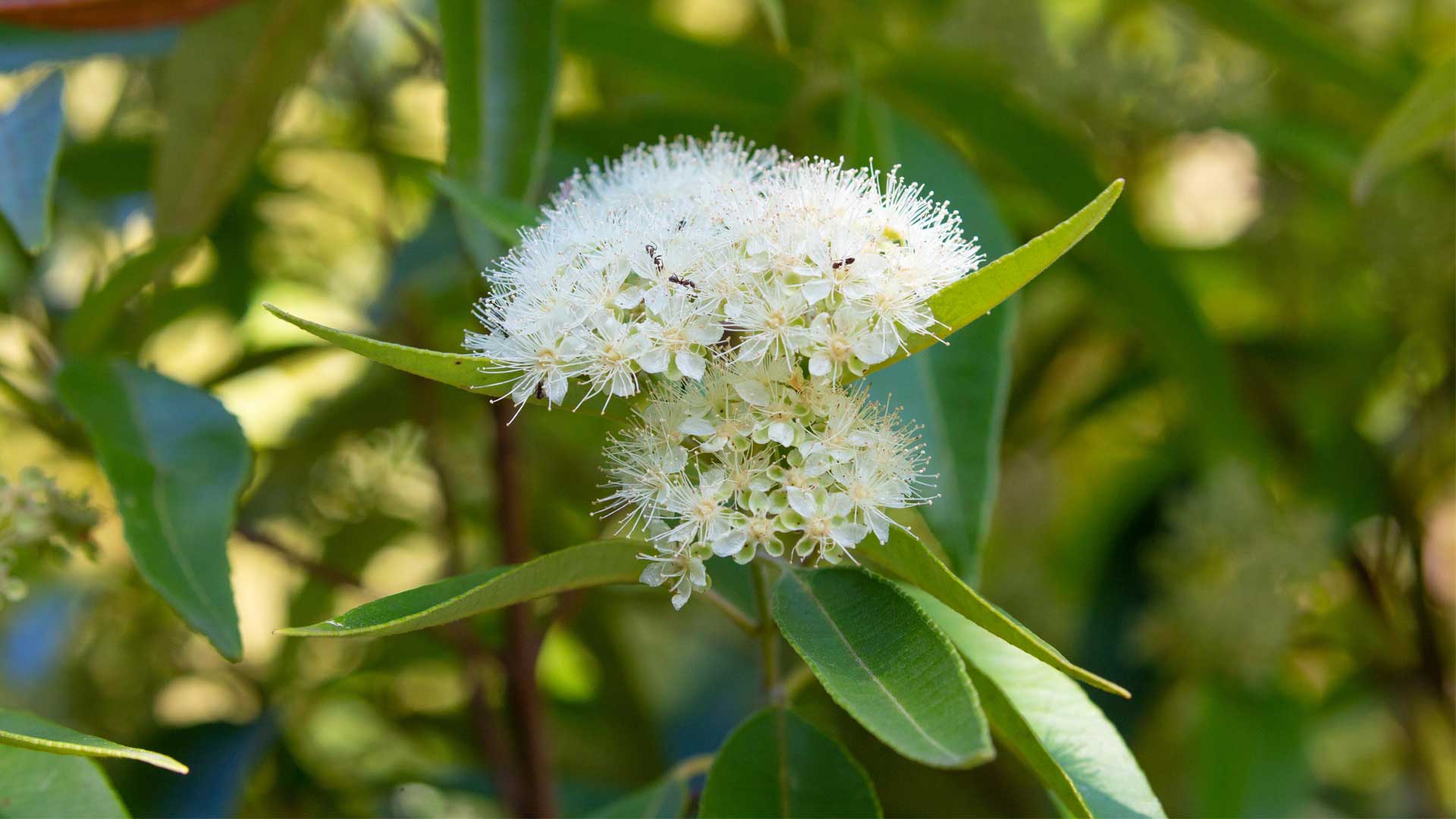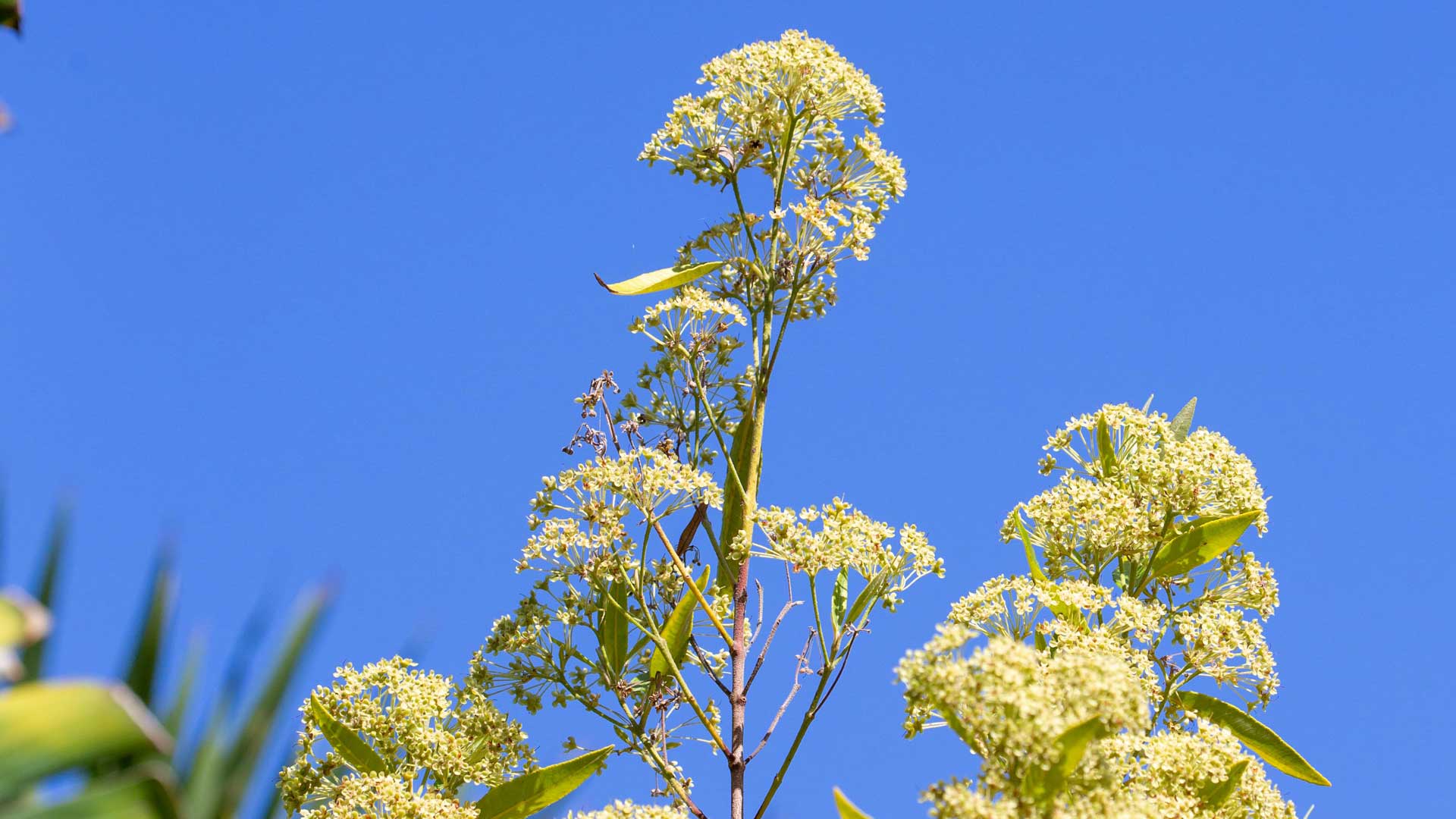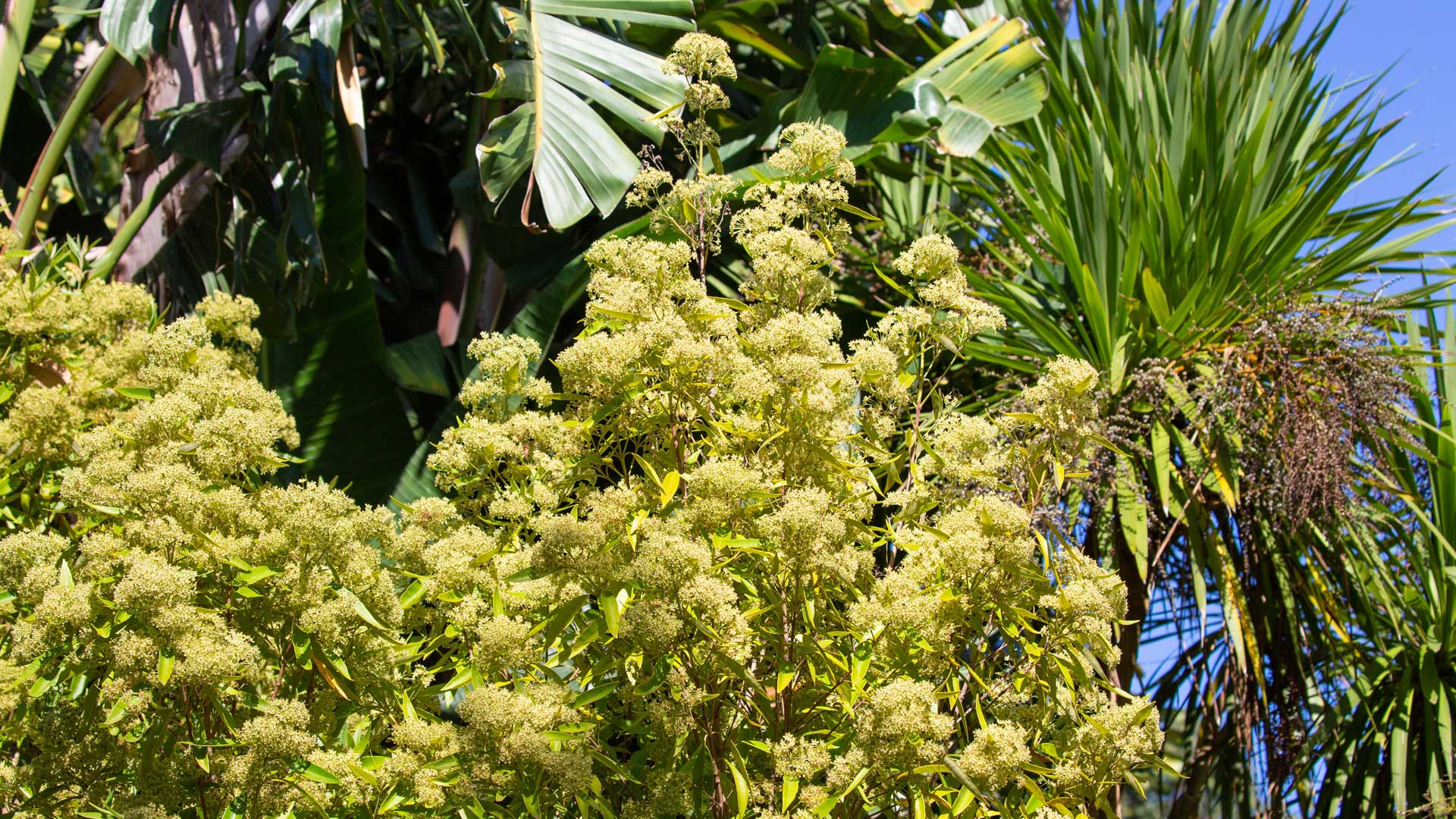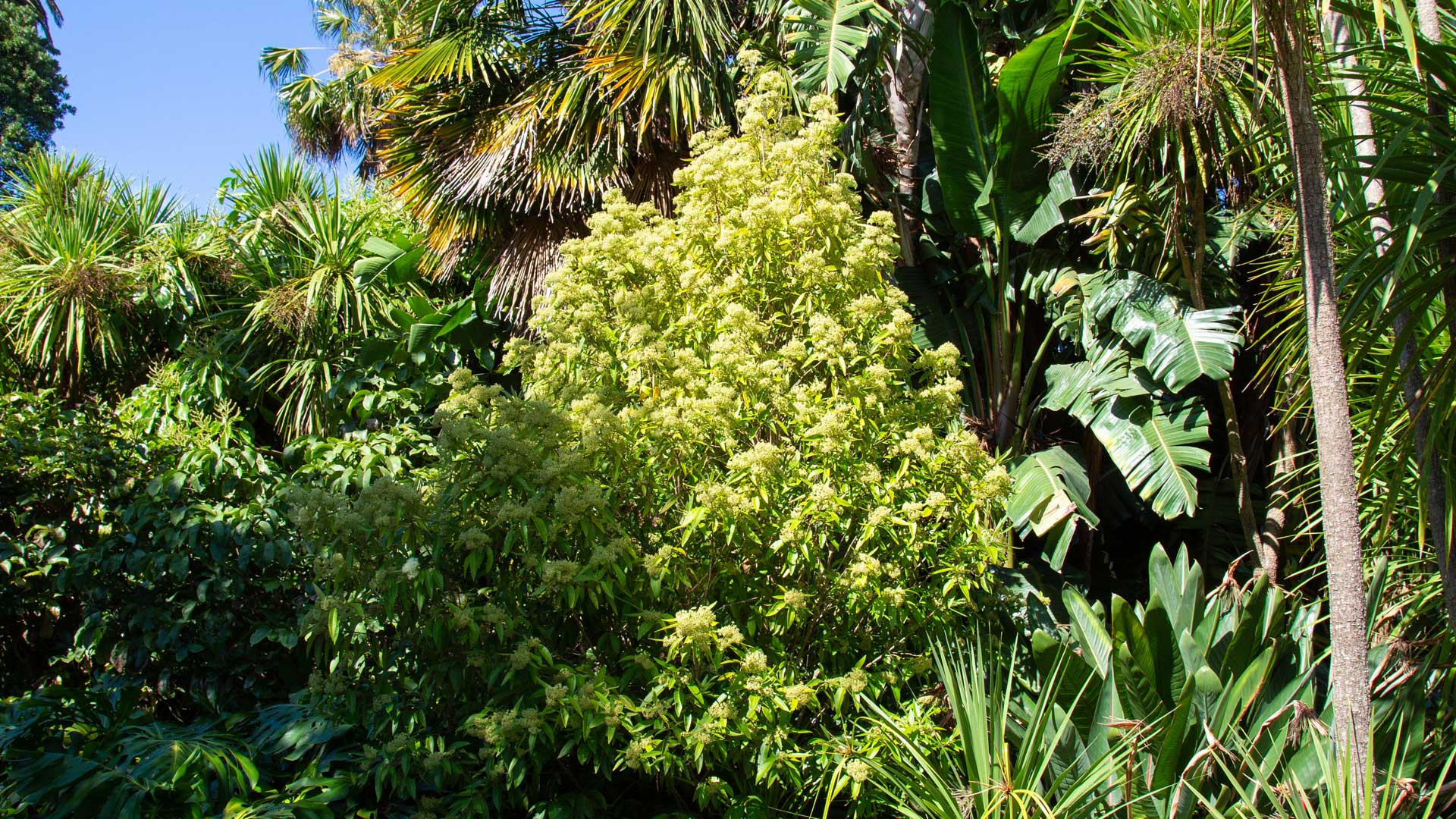Sadly these plants are susceptible to myrtle rust, a fungal disease that attacks plants in the myrtle family including pōhutukawa, mānuka and rātā, so it’s good to be aware of what to look out for and how to best deal with it. First discovered in Northland in early May 2017, this fungus has now spread to the North and South Islands of Aotearoa.
Myrtle rust attacks a plants new growth - young leaves, shoot tips, fruits and flower parts. When a plant is first infected, the leaves will display tiny raised spots that range from brown to grey, ringed with red-purple halos, which then go on to produce a mass of yellow spores. If you spot it don’t touch it! Instead contact MPI through the hotline 0800 80 99 66 and take these steps.
Great for the home garden, this evergreen shrub, can grow up to 6 metres in height and will continue to produce flowers from summer through to autumn. It prefers to be planted in well-drained soils with plenty of organic matter and compost, and is not frost tolerant.
You can see the lemon myrtle at Auckland Zoo on the walkway from Galapagos tortoises to emperor tamarins – sit and admire it over a cold drink at our Old Elephant House café! Stay tuned for the next blog in this series and if you have any recommendations on plants we should cover or questions for our horticulture experts, flick us an email!


